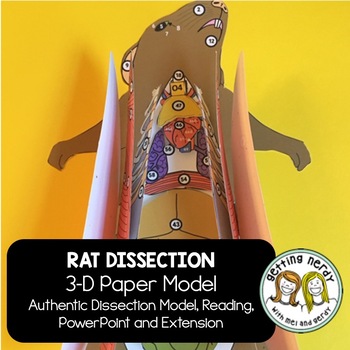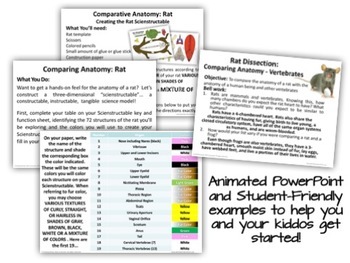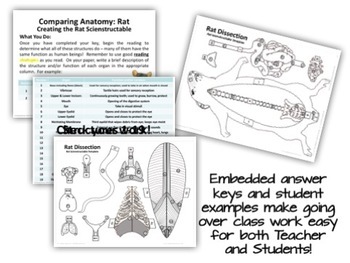Rat Paper Dissection - Scienstructable 3D Dissection Model
- Zip
- Google Apps™

What educators are saying
Also included in
- Want to explore without the mess? Our student-friendly, budget-friendly eco-friendly 3-D Scienstructable dissection models can be used as a dissection-free exploration, a pre-dissection tool, or as a summative assessment for comparative anatomy. Explore a specimen today!SPECIMEN INCLUDED in this BUNPrice $184.95Original Price $208.60Save $23.65
- Want to explore without the mess? Our student-friendly, budget-friendly eco-friendly 3-D Scienstructable dissection models can be used as a dissection-free exploration, a pre-dissection tool, or as a summative assessment for comparative anatomy. Explore one of our 15 invertebrate or vertebrate animaPrice $264.95Original Price $330.25Save $65.30
Description
Your students will scurry to see this amazing dissection model! Our 3D Scienstructable dissection models can be used as a dissection-free exploration, a pre-dissection tool, or as a summative assessment for comparative anatomy. You'll never hear "aw, rats" about dissection again!
WHAT'S INCLUDED in this 2-3 DAY LESSON:
• 23 EDITABLE PowerPoint slides with bellwork, instructions, notes and embedded answer key to handouts
• 22 NON-EDITABLE PDF handouts
→ Guided reading PDF
→ Differentiated graphic organizers
→ Dissection Template in BLACK LINE AND COLOR
→ Extension questions
→ Answer keys
• DIGITAL GOOGLE CLASSROOM links to all items listed above which can be easily converted to Microsoft School with directions provided or altered to fit your school’s personal learning management system
STUDENTS WILL:
• Learn about the internal and external anatomy of the rat using the guided reading
• Color, cut out and assemble a rat 3D Scienstructable dissection model
THIS PRODUCT IS ALSO FOUND IN OUR:
• Dissection - Vertebrate Animals
CHECK OUT OUR OTHER DISSECTION MODELS:
• Cat Dissection - 3-D Paper Model
• Crayfish Dissection - 3-D Paper Model
• Dissection - Invertebrate Animals
• Eye Dissection - 3-d Paper Model
SEE HOW THIS LESSON ALIGNS WITH NGSS, TEKS or GSE
Because we have created many of our own graphics or have purchased licenses to other graphics with permission, we cannot offer our resources in editable format unless otherwise stated.
TERMS OF USE (TOU):All rights reserved by GETTING NERDY®️.
• This product is to be used by the original purchaser only
• Intended for classroom and personal use only
• Copying for more than one teacher, classroom, department, school, or school system is prohibited.
• This product may not be distributed or displayed digitally for public view
Failure to comply is a copyright infringement and a violation of the Digital Millennium Copyright Act (DMCA). Clipart and elements found in this PDF are copyrighted and cannot be extracted and used outside of this file without permission or license.
RAT SCIENSTRUCTABLE 3D DISSECTION MODEL © 2012 to present GETTING NERDY®️ All Rights Reserved
www.gettingnerdyscience.com







